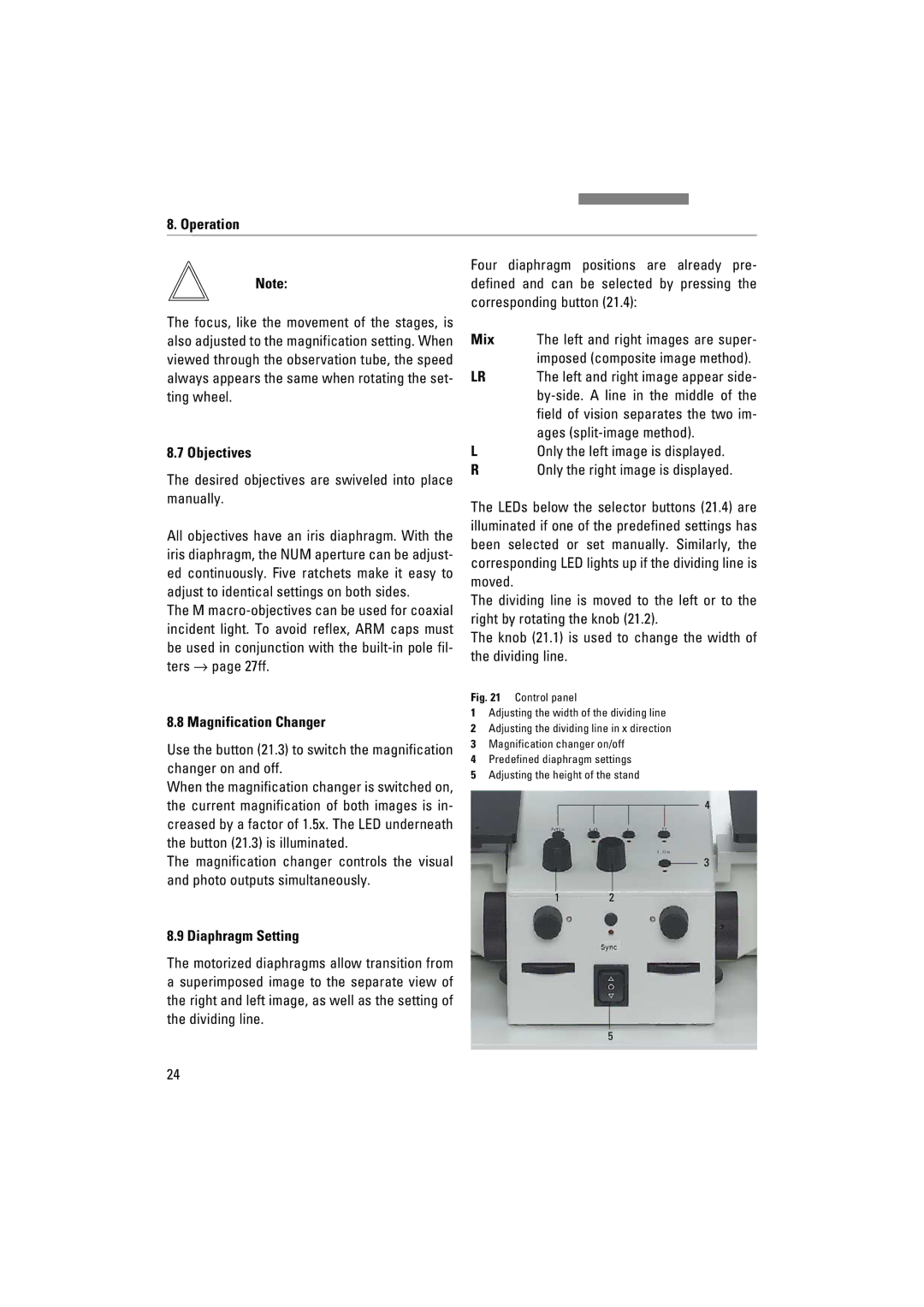
8. Operation
Four diaphragm positions are already pre-
Note:defined and can be selected by pressing the corresponding button (21.4):
The focus, like the movement of the stages, is also adjusted to the magnification setting. When viewed through the observation tube, the speed always appears the same when rotating the set- ting wheel.
8.7 Objectives
The desired objectives are swiveled into place manually.
All objectives have an iris diaphragm. With the iris diaphragm, the NUM aperture can be adjust- ed continuously. Five ratchets make it easy to adjust to identical settings on both sides.
The M
8.8 Magnification Changer
Use the button (21.3) to switch the magnification changer on and off.
When the magnification changer is switched on, the current magnification of both images is in- creased by a factor of 1.5x. The LED underneath the button (21.3) is illuminated.
The magnification changer controls the visual and photo outputs simultaneously.
8.9 Diaphragm Setting
The motorized diaphragms allow transition from a superimposed image to the separate view of the right and left image, as well as the setting of the dividing line.
Mix The left and right images are super- imposed (composite image method).
LR The left and right image appear side-
LOnly the left image is displayed.
ROnly the right image is displayed.
The LEDs below the selector buttons (21.4) are illuminated if one of the predefined settings has been selected or set manually. Similarly, the corresponding LED lights up if the dividing line is moved.
The dividing line is moved to the left or to the right by rotating the knob (21.2).
The knob (21.1) is used to change the width of the dividing line.
Fig. 21 Control panel
1Adjusting the width of the dividing line
2Adjusting the dividing line in x direction
3Magnification changer on/off
4Predefined diaphragm settings
5Adjusting the height of the stand
4
3
12
5
24
